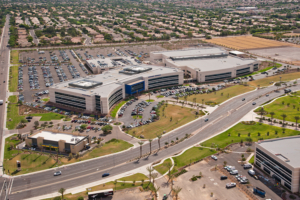Q: What should the state be doing to create jobs?
DW: The landscape is uber-competitive nationally to attract jobs. Our leadership needs to make Arizona more competitive from a tax perspective. Additionally, we need (to provide incentives to) Arizona companies to grow. If we are serious about attracting jobs and willing to compete with peer communities for the best-of-class projects, we need a significant deal-closing fund (greater than $25M) that is consistently appropriated. Arizona’s toolbox is bare. Our competition oftentimes is working out of a 10-drawer, diamond-plated box.
JD: Just about the opposite of what they’re doing now — lowering taxes on businesses, especially real estate taxes. I support GPEC’s solar incentives, however, I’m in favor of a more broad-based incentive package to attract businesses to our state from across the spectrum. We need to create a tool belt for the state to aggressively go after business like Texas and others are doing.
WS: We need to use incentives such as the recent solar farm to acquire and help retain existing businesses. Tax breaks (locally and nationally) for small businesses should also be used to help create jobs as well.
Q: What is your firm doing differently today than it did in 2007?
KR: I think we have held to the fundamentals, which is to maintain the strength of our balance sheet in order to provide stability through this recession to our tenants, both current and future. With our existing assets, we have seen the value of having really great property managers who know how to maintain the asset over the long term — very important not only to our tenants but to our lenders. What’s new is our entry into some of the emerging lines of business. Our distressed assets group, for example, works with lenders to reposition, re-tenant and, ultimately, realize the value of assets. There’s probably $250B in distressed multi-family and commercial assets out there, and the special servicers and banks have only worked through 30% of it. There is a backlog and you will see the pipeline over the next few years.
TH: In 2004 to 2007, Ryan Companies was getting a majority of our revenues from internally developed projects. Today, Ryan is a commercial builder, constructing for new and repeat customers throughout the state. We are venturing into new areas of development and construction that we never imagined we would be involved in, such as alternative energy and senior housing. We always built tenant improvements in our buildings we owned, but now our TI division is working in many other buildings around the Valley and has won awards for its efforts. Lastly, like everyone else, we are tighter with our expenses.
BM: At Colliers, we are working much more collaboratively with our colleagues for the benefit of our clients. We recognize that our clients want and deserve to benefit from the substantial and collective talents of the firm, not just the team chosen for their project. We are working together to provide that higher level of service and results.



